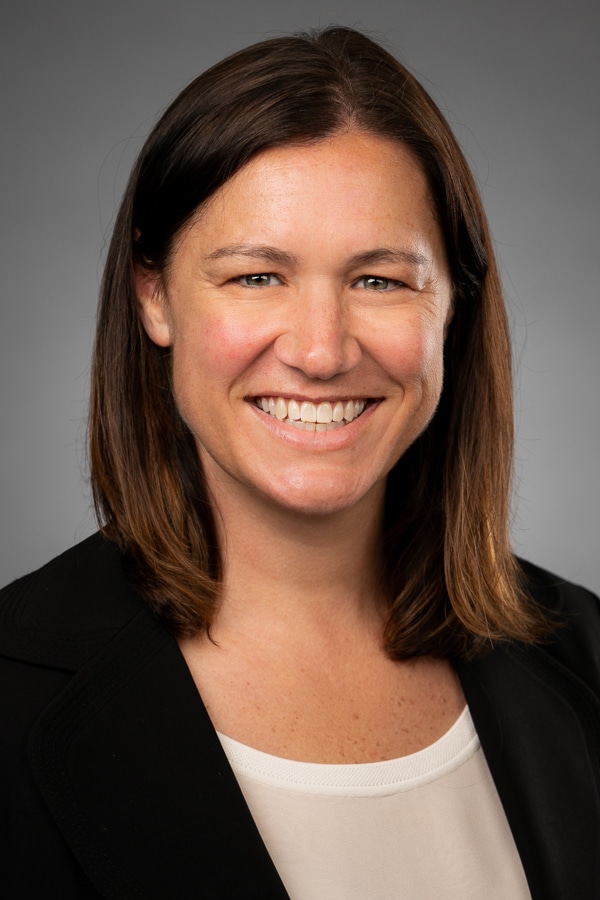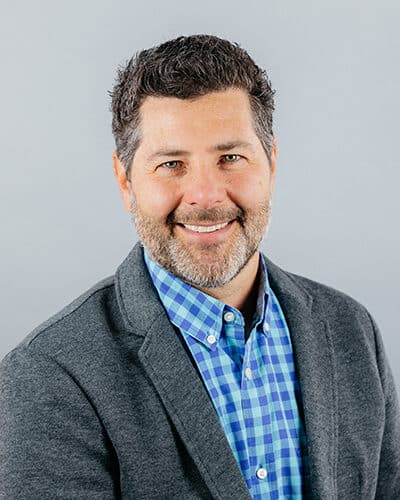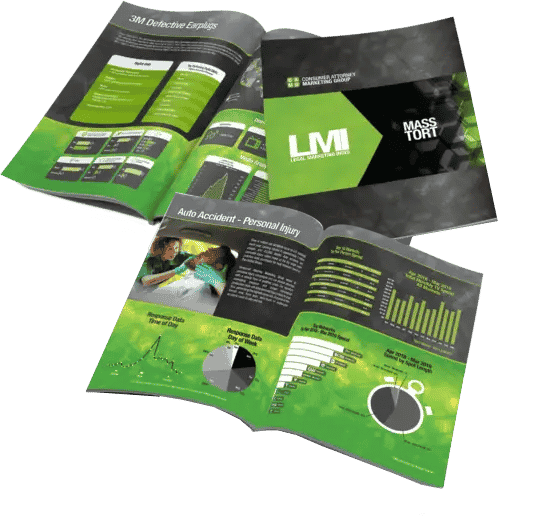Phillips CPAP
- What is the current status of CPAP and BiPAP lawsuits?
- Current CPAP and BiPAP settlements
- What plaintiffs’ law firms should know about the impending influx of CPAP and BiPAP mass tort litigation?
- Is there going to be a wave of CPAP and BiPAP mass tort litigation?
- What are CPAP and BiPAP ventilators?
- Which CPAP and BiPAP ventilators are being recalled?
- Why are manufacturers recalling CPAP and BiPAP ventilators?
- Which CPAP and BiPAP manufacturers are plaintiffs currently suing?
- What are the claims asserted by plaintiffs suing CPAP and BiPAP manufacturers?
- How can I find potential plaintiffs for CPAP and BiPAP litigation?
Many people use portable CPAP or BiPAP ventilators to treat a wide variety of breathing issues. One of the most common sleep disorders benefitting from CPAP or BiPAP machines is sleep apnea, a potentially serious condition that causes your breathing to stop and start repeatedly. Approximately 3-7% of the population suffers from this disorder, and these ventilators offer relief for continuous breathing and a restful night’s sleep. Additionally, better sleep can reduce the risk of heart attack and stroke and lower blood pressure, glucose, and cholesterol levels.
The use of BiPAP devices is less common, as most insurance providers require proof that CPAP was ineffective before changing to a BiPAP ventilator. Still, BiPAP machines can treat central sleep apnea (CSA) and many heart, lung, and neurological disorders.
Recently, though, one manufacturer of these life-saving medical devices is facing scrutiny after several patients suffered harm rather than therapeutic relief after using their CPAP and BiPAP ventilators. Some of the most popular ventilators, all made by Philips, are the focus of a new recall by the Food and Drug Administration (FDA). The materials used to make the Philips ventilators, such as polyester, polyurethane foam, diethylene glycol, and other volatile organic compounds, can break down and enter the device’s air pathway. Because there’s no filter on the device, the degradation of the polyester and other particles can go directly into the patient’s lungs, potentially causing lung cancer and other serious injuries.
Since the FDA recalled these devices for their design defects and adverse effects, hundreds of people across the nation have filed lawsuits, holding the manufacturer accountable. In addition, at least one class action has been filed, though no multi-district litigation (MDL) cases have formed yet. Nevertheless, this new influx of CPAP and BiPAP lawsuits may catch the attention of many law firms, and it’s unlikely the momentum will stop any time soon.
Attorneys interested in acquiring clients for this potential mass tort action need to act quickly to get ahead of the curve. Many plaintiffs want financial compensation. Therefore, they may seek out your law firm and a team of legal professionals to provide them with legal advice and representation for their CPAP or BiPAP lawsuits, and you must be ready to support them adequately and efficiently.
What is the current status of CPAP and BiPAP lawsuits?
Because the recall only happened in June 2021, CPAP lawsuits filed against Philips, the defective positive airway pressure device manufacturer, are still in the early stages. While many individuals have yet to file claims, one individual began a class action lawsuit.
The class action, Shelton v. Koninklijke Philips N.V. et al., was filed in federal court in Massachusetts on June 29, 2021, and includes the following causes of action:
- Strict liability for failure to warn
- Negligent failure to warn
- Strict liability for defective design
- Negligent design defects
- Negligent CPAP recall
- Breach of express warranty
- Breach of the implied warranty of merchantability
- Unjust enrichment
The lawsuit also includes a state law claim for unlawful trade practices.
So far, no federal multidistrict litigation (MDL) has formed. However, many thousands of individuals and patients have suffered from using these devices, so it’s likely one could develop soon. When cases reach hundreds or thousands of plaintiffs alleging similar injuries against the same entity, multidistrict litigation helps consolidate those individual lawsuits into one court site for pretrial proceedings and discovery for increased efficiency and convenience.
Often, plaintiffs and attorneys prefer MDLs to class actions because the courts tailor the payouts in an MDL to each client and their relative injuries, rather than one payout being split equally among all, as is the case with class actions. The only problem is, MDLs can be a lot of work for a firm to manage, and it takes specialized marketing to accumulate clients, so it’s helpful to have some outside help.
Current CPAP and BiPAP settlements
Because CPAP cases are still in their infancy, there have not been any settlements yet. Still, plaintiffs can often expect, at the very least, settlement discussions and negotiations in a product liability case against a large manufacturer. When the use of a device leads to mass injuries, manufacturers often want to resolve the issue as quickly and affordably as possible, thereby trying to avoid costly trials.
What plaintiffs’ law firms should know about the impending influx of CPAP and BiPAP mass tort litigation?
Plaintiffs’ law firms should understand that millions of Americans depend on CPAP machines every night to treat breathing disorders. These continuous or bilevel positive airway pressure devices force air through the upper airway and into the lungs, quite literally saving or improving people’s quality of life.
Most of these people use CPAP or BiPAP machines manufactured by Philips. The design defect in Philips Respironics devices can cause severe, permanent, or even life-threatening injuries and illnesses. Numerous complaints received by thousands of vulnerable individuals describe various potential health risks after susceptibility to particles and certain chemicals present in the ventilators’ polyester-based polyurethane (PE-PUR) sound abatement foam, used to dull the sound and vibrations emitted by the devices. The breakdown of this foam allows patient exposure via inhalation or consumption, possibly leading to toxicity (e.g., organ failure), cancer, and the development of certain lung conditions.
According to its Annual Report for 2020, Philips claims to have 65% of the market share for CPAP devices in the United States. Philips estimates that it made nearly $20 billion in revenue in that year alone, with 49% of those profits coming from sleep and respiration devices, such as CPAP and BiPAP machines.
Currently, the voluntary recall of these mechanical ventilators impacts an estimated 4 million devices. The U.S. Department of Veterans Affairs says it distributed nearly 600,000 Philips devices to veterans for home use. The department also claims that doctors use an additional 2,000 devices in veterans’ hospitals and clinics.
If even a fraction of these ventilator users develops lung damage or cancer from using Philips CPAP or BiPAP medical devices, the resulting mass tort litigation may be one of the biggest ever.
Additionally, the harm that stems from Philips’ design defect and the use of unapproved cleaning methods are serious and possibly deadly. Victims claim to have suffered severe lung damage from the foam particles released by the devices. The chemicals in these particles are also carcinogenic, meaning likely to cause cancer. If these subjected individuals fall ill with lung or any other type of cancer, the medical bills alone will total many thousands of dollars for a single case. Thus, the overall compensation that these victims deserve would be substantial.
Also, class members claim that Philips knew of the dangers posed by the poor design of their positive airway pressure devices but waited to recall the defective products until they released new ones that didn’t have the defect. If proven true, there may be punitive damages available in this mass tort intended to punish Philips for its grossly negligent actions and intentional wrongdoing without regard for consumer safety or well-being.
Because there are so many potential victims of Philips CPAP and BiPAP devices, and because the manufacturer may be facing punitive damages for its egregious behavior, plaintiffs’ law firms should strongly consider acquiring and representing clients involved in this mass tort litigation.
Contact CAMG Inc. to learn how we can help your legal firm market itself to attract clients seeking compensation after suffering extreme injuries from the use of these recalled devices.
Is there going to be a wave of CPAP and BiPAP mass tort litigation?
Philips’ recall of its ventilators will likely lead to mass tort litigation. The severity of the injuries connected to the design defects will make victims more likely to take their claim to court. Also, the ubiquity of the defective breathing machines makes it possible that the class of victims will be substantial. With so many victims injured by a singular design flaw, there is a good chance that this situation will evolve into a mass tort.
In the past decade, mass tort and product liability lawsuits have moved away from class actions and toward resolution by multidistrict litigation (MDL). In an MDL, a judicial panel consolidates individual compensation claims sharing similar injuries or issues and defendants into one central federal jurisdiction for pretrial procedures, such as:
- Discovery and evidence gathering
- Motions to dismiss the case
- Motions to resolve the case on summary judgment
- Depositions and interrogatories of the defense
- Motions to challenge evidence
By consolidating these cases to more efficiently and singularly handle these important pretrial proceedings, the mass litigation process streamlines the numerous lawsuits and provides access to the same information, rulings, and personal data for all plaintiffs’ attorneys. Meanwhile, the defendant only has to handle the casework of one client rather than hundreds. A single judge in a single federal court oversees these procedures, allowing for an isolated point of contact to centralize communications and strengthen transparency and uniformity.
Many times, the parties will agree to hold bellwether or test trials. They will select individual claims that are fundamentally similar to the thousands of others in the MDL. These cases go to trial to help the parties and their lawyers understand how juries are likely to react to the presented evidence. The plaintiffs and the defendant can then use the outcomes of these test trials during settlement negotiations.
Cases that don’t go to trial or reach a settlement in the MDL are released back to state court where they originated. There, the plaintiff can proceed with the entire body of evidence that came from the federal MDL.
Victims of mass tort injuries, like those caused by Philips’ defective ventilators, have the right to use the MDL process to recover the compensation they need and deserve. Unlike class actions, though, plaintiffs’ lawyers in an MDL still have much power and control over their case.
What are CPAP and BiPAP ventilators?
CPAP stands for continuous positive airway pressure, while BiPAP stands for bilevel positive airway pressure, meaning both breathing treatment devices help push air through the upper airways and into the lungs to keep affected patients’ breathing uninterrupted throughout the night. Companies design and market these ventilators to primarily treat sleep apnea, though healthcare professionals also use them to treat respiratory failure and certain heart conditions.
People who have sleep apnea struggle to breathe when sleeping because their airway gets blocked by relaxed throat muscles if they suffer from obstructive sleep apnea (OSA), the most common form of the condition. Central sleep apnea (CSA) happens when the brain fails to send signals to the body, reminding it to keep breathing normally while you’re sleeping. One type of CSA called Cheyne-Stroke Breathing Pattern typically occurs due to congestive heart failure or a stroke, resulting in intermittent hyperventilation and apneas. The use of certain drugs like opioids can lead to CSA.
The most apparent symptom of sleep apnea is excessive snoring—the sound that the airway makes when it overcomes the blockage. Other signs or symptoms include:
- Waking often throughout the night
- Snorting or gasping upon awakening
- Feeling unrested in the morning even after a full night of sleep
- Trouble sleeping
- Mood changes
- Difficulty concentrating
Sleep apnea is a serious condition that often requires medical intervention. When the airway gets blocked, it disrupts the sleeping person’s breathing. Sleep apnea, if left untreated, can lead to:
- High blood pressure
- Daytime fatigue
- Stroke
- Heart attack
- Cardiomyopathy, which can lead to heart failure
- Asphyxiation
- Diabetes
CPAP and BiPAP ventilators are paramount in treating sleep apnea to curb potential health risks that can develop from the condition and continued lack of oxygen during sleep. The devices come with face masks that seal around the patient’s mouth and nose to increase the air pressure inside the cover. The high air pressure keeps the airway open, removing the obstruction and letting the patient breathe while asleep.
BiPAP ventilators decrease the air pressure when the sleeper is exhaling, making it easier to breathe out for those who find the CPAP set-up a bit uncomfortable or anxiety-inducing, thereby still inhibiting sleep.
Which CPAP and BiPAP ventilators are being recalled?
Not all of Philips Respironics CPAP and BiPAP ventilators are being recalled. Only the following models are affected:
- A-Series BiBAP A30
- A-Series BiBAP Hybrid A30
- A-Series BiBAP A40
- A-Series BiBAP V30 AutoVentilator
- C-Series ASV, S/T, AVAPS
- Dorma 400, 500 CPAP
- DreamStation ASV
- DreamStation CPAP, Auto CPAP, BiPAP
- DreamStation Go CPAP, APAP
- DreamStation ST, AVAPS
- E30 (under emergency use authorization)
- Garbin Plus, Aeris, LifeVent Ventilator
- OmniLab Advanced Plus In-Lab Titration Device
- REMStar SE AutoCPAP
- SystemOne ASV4
- SystemOne Q Series
- Trilogy 100Ventilator
- Trilogy 200Ventilator
The recall is limited to the following devices:
- Manufacturing dates: April 11, 2007, to April 22, 2021
- Distribution dates: July 21, 2009, to April 22, 2021
- Product Codes: BZD and MNS
Despite these limitations, the recall still affects an estimated four million devices.
Why are manufacturers recalling CPAP and BiPAP ventilators?
The recall of certain Philips CPAP and BiPAP devices is due to a particular type of foam that soundproofs the ventilator to quiet its vibrations. This specialized foam, made from polyester-based polyurethane (PE-PUR), can break down into small particles and be forced through the device via the highly pressurized air system, causing users to become susceptible to inhaling or ingesting them. High heat and humidity can quicken the degradation process of the foam.
Once inhaled, this chemical exposure can cause lung damage, cancer, or the following medical conditions:
- Inflammation or irritation in the airway
- Irritation in the skin, eyes, nose, or respiratory tract
- Asthma
- Coughing
- Dizziness
- Headaches
- Hypersensitivity
- Nausea
- Vomiting
- Damage to the kidney or liver
Despite these serious risks, none of these CPAP or BiPAP machines have a filter that could prevent these harmful particles from reaching the patient’s lungs and mitigating cancer risks.
According to the class action complaint against Philips, the company knew about these risks for years, with users filing complaints that detail the types of black particles they found in their machines and masks. Nevertheless, Philips took no action to fix the problems or replace the affected devices.
The complaint alleges that Philips only initiated the voluntary Class 1 recall in June 2021 because it was about to release a new line of CPAP and BiPAP devices without PE-PUR foam. Philips’ newer DreamStation 2 model hit shelves in April 2021, a mere two months before the medical device manufacturer released the recall.
Which CPAP and BiPAP manufacturers are plaintiffs currently suing?
Victims of the dangers associated with defective CPAP and BiPAP devices are suing the following defendants for their injuries and damages:
- Philips North America LLC
- Philips RS North America LLC
- Koninklijke Philips N.V.
Koninklijke Philips N.V., headquartered in the Netherlands, is the parent company of the other two device manufacturers named in the CPAP and BiPAP lawsuits. Philips North America LLC is the company’s branch in America, and Philips RS North America LLC is the part of the company that used to be Respironics. Respironics was an independent company that manufactured and sold the first-generation DreamStation product family brand of ventilators until Philips bought the company in 2008. Since acquiring Respironics, Philips has become the major player in ventilators and sleep apnea devices, accounting for two-thirds of the market in the United States.
What are the claims asserted by plaintiffs suing CPAP and BiPAP manufacturers?
Plaintiffs are suing CPAP and BiPAP manufacturers under products liability laws and asserting the following claims:
- Failure to warn
- Design defects
- Breach of express warranty
- Breach of implied warranty of merchantability
- Manufacturing defects
- Negligence
The failure to warn claims allege that Philips knew about the potential for the foam to break down and pose a risk to the consumer. Nevertheless, Philips either ignored the threats or actively concealed them.
The design defect focuses on the particular type of foam used in the ventilator. Given the availability of other types of soundproofing foam, the risks of using PE-PUR foam outweighed the benefits and made the ventilators needlessly dangerous.
Plaintiffs have couched their products liability claims in both strict liability and negligence.
How can I find potential plaintiffs for CPAP and BiPAP litigation?
Personal injury lawyers and plaintiffs’ attorneys can find or attract CPAP and BiPAP victims through a wide variety of marketing strategies. These specialized methods range from traditional forms of attorney marketing, like radio and television ads, to online marketing initiatives, including search engine optimization (SEO) and targeted media buys.
Our marketing company at CAMG can help. We are a full-service advertising agency that caters to attorneys and the legal industry, and mass torts in particular. We help lawyers connect with potential plaintiffs. This way, victims can find the legal representation they need to get the compensation they deserve, and lawyers can find the business and the clientele they desire to continue operating with a healthy bottom line.
We assist and advance law firms by determining the legal marketing strategy that will be most efficient to achieve desired outcomes for your legal business. We don’t stop at the strategy phase, though. We then see the project through to completion and handle the logistics, from buying air time to writing marketing copy to performing intake services, so you don’t have to divide your time between marketing to potential clients and representing your existing clients. You get to be the best advocate you can for your clientele while we take on the task of bringing in those individuals you hope to represent.
Visit our website to learn more about us, or contact CAMG online today to receive a free consultation concerning our services and how we can help you and your firm.
CAMG has thousands of spots and infomercials that can be branded for your firm. Reach out to us for the latest creative offline and online examples*.
*Examples shown are not always current examples.
Request Samples
* These fields are required.

Is your firm in the Top 3 of Google Search?

CAMG Ethics White Paper
Legal Areas
Are you looking for data-driven marketing for your law firm?
I have worked with CAMG for years. Not only are they great at delivering, but they are great people to work with!

CAMG is always accommodating and willing to work in a way that supports your office as an extension of your team.

Steve Nober and the team at CAMG are responsive, ethical, talented, reasonably priced, and easy to work with!

If you are looking for professional, hardworking people who produce great results and then take you out for a nice dinner, look no further than CAMG


THE NATION’S LARGEST FULLY INTEGRATED
Marketing Agency Dedicated to Law Firms
- Television
- Radio
- Public Relations
- Medical Record Retrieval & Review
- Search Engine Optimization
- Paid Digital
- Out of Home
- Intake & Contracting Services
